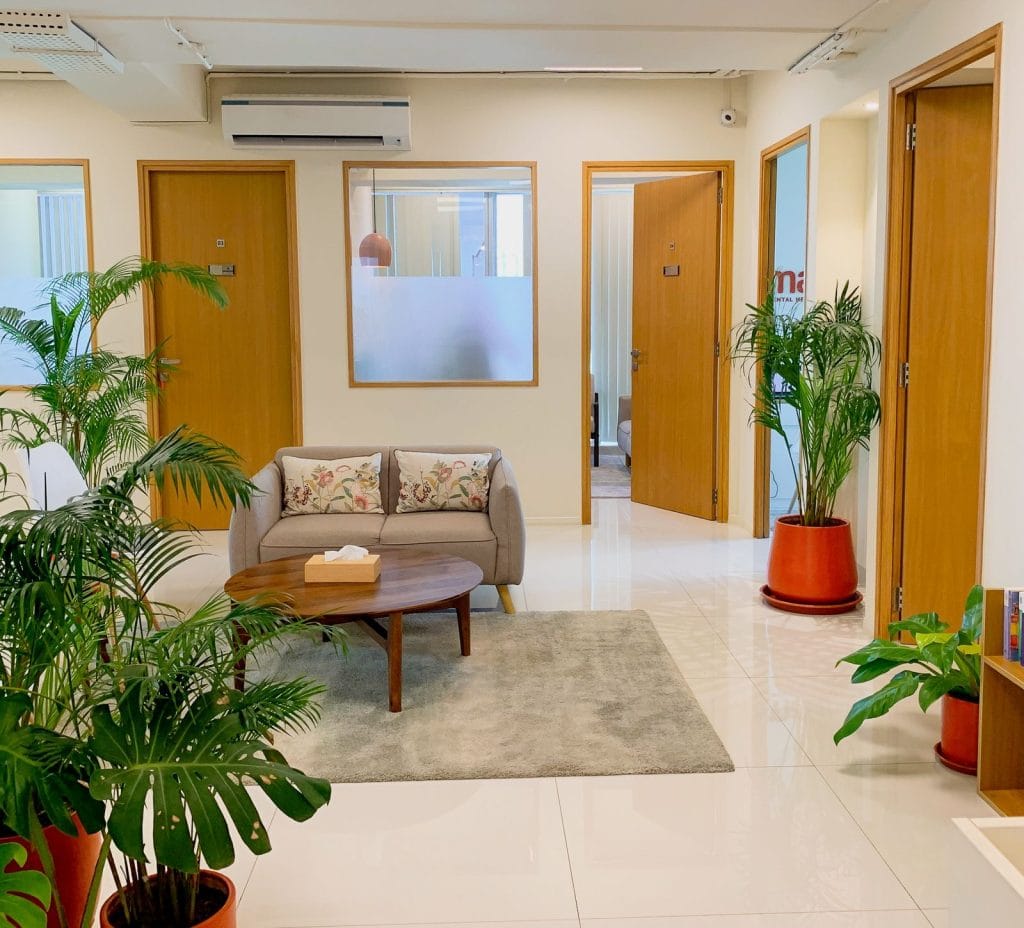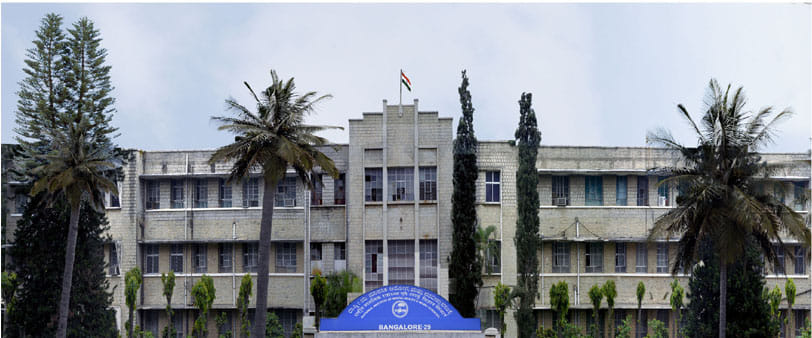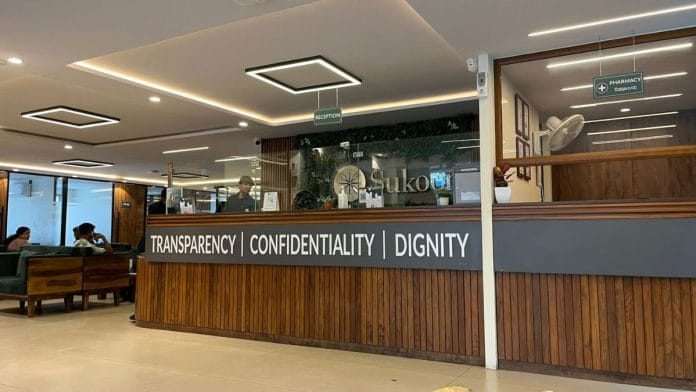Bengaluru: Amit Malik always has his eyes peeled for trained psychologists and psychiatrists. His mental health start-up Amaha, which caters to people across India, more than tripled its specialists in Bengaluru in the last two years alone. It’s a shift in focus for Malik, a psychiatrist himself, who is based out of Mumbai and acquired Delhi-based Children First in 2022. He’s in expansion mode, scaling the brain-salve that is therapy, and Bengaluru is at the heart of it.
India’s IT and start-up capital is a magnet for young working professionals. But with no support system, the weary and worn-out are actively seeking help. Bengaluru is emerging as a mental-health hotspot, beyond just NIMHANS, with clinics dotting its major streets, and AI occasionally moonlighting as a therapist.
“The number of people seeking the right kind of treatment is a lot higher. That’s why we’ve seen faster growth in Bengaluru,” said Malik, referring to the wave of transient, upwardly mobile, high-performance migrants who are now inextricable from the city’s identity. From 15, Amaha now has 54 clinical psychologists and psychiatrists on its rolls for the city.

“There’s an absence of a strong support network, so people are left with no option but to find it outside the established provider system,” Malik added.
The influx of migrants is responsible for the city’s reputation—of drawing the blueprint for the future of work. First, it was the IT companies, post-work drinks, and breweries situated in the sweet spot between trendy and functional, the dominance of the young. Now, it’s mental health that’s shaping the contours of life in the megapolis.
The influence of NIMHANS, combined with a cultural wave that’s propelling people to prioritise therapy, has resulted in Bengaluru becoming a mental health hotspot even among tier-1 cities.
“On any street in Bengaluru, you’ll find at least one mental health clinic. On CMH (Chinmaya Mission Hospital) road, we have both Amaha and Kaha Minds. In Kalyan Nagar, I remember seeing four in one street,” said Chinmayi, a clinical psychologist practising in Amaha’s Indiranagar centre.
It’s still not enough, but Karnataka still fares better than other states. A response to a question in the Rajya Sabha shows a startling imbalance between mental health professionals and citizens. Karnataka has 261 trained psychiatrists and medical officers working under the District Mental Health Programme (DMHP), according to data presented in the upper house of parliament. Gujarat has 108 and Maharashtra has 26. Meanwhile, the national capital has only one.
In Bengaluru, mental health is wellness-oriented, performance-based, and community-centric. Armed with hyper awareness and the ability to micromanage every detail of one’s existence, millennials and Gen-Z are turning this connection into a lifestyle.
“The next big thing is mental health, de-stressing. We’re quite bullish about the space,” said Ankur Khaitan, principal at Fireside Ventures, a VC firm that has invested in Amaha and other wellness startups in Bengaluru.
Also read: Tired and invisible—India’s mental health caregivers are now forming support groups
A new kind of hospital
With luxe, sea-green velvet couches and wooden floors, a gym with floor-to-ceiling glass windows, Sukoon Psychiatry Centre in Bengaluru resembles a hotel. The only thing that gives away its identity is the grilles on the windows and the balconies that are walled in.
“We wanted to break the myth that a mental health facility is a madhouse,” said Sumantra Bhowmick, Sukoon’s business development head. “It’s as good as staying in a 3 to 4-star hotel. We’re the most premium facility in the market.” The Delhi-based company, which opened an outpost in Bengaluru last year, charges Rs 20,000 a night.

They’re not the only such facility in the city. Amaha is set to open a mental health hospital in Bengaluru as well. Its multi-storeyed building in Thippasandra gives off the same wellness-centre-like feeling. There are lots of plants, delicate beige and white sofas, and nondescript artwork. Both outposts are a far cry from the usual image of a hospital. There’s no clinical white light, no metallic hospital smells. Both are envisaging a future where mental health is a priority, and people are willing to fork out big bucks to seek treatment.
No space for a bad product
In 2019, Lopamudra, a product manager with a consumer healthcare firm, was on the lookout for a therapist. But she only had a handful of options available. All the sought-after ones had their slots booked out months in advance. Finally, through a process of trial and error—and a network she had cultivated through a previous stint as a food blogger—she found someone who worked for her.
“It took time. Finding a therapist is like looking for the right chair or the perfect pair of shoes. What fits another person won’t necessarily fit you,” she said. “I visibly started feeling better. She [her therapist] helped me become myself.”
In the six years since her struggle began, there’s been an enormous change in tide owing to increased infrastructure as well as the Covid-19 pandemic, which left people with no option but to look inwards. In cities with a large number of migrants, such as Bengaluru—where they now constitute 42 per cent of the population—citizens were open to seeking help.
“There’s nothing really to do here, other than go to the office. The cost of living has also gone up some 10 times in the last five years,” said Lopamudra, who is originally from Tinsukia, an industrial town in Assam. “No wonder there are so many mental health and wellness centres here.”

Urban loneliness is no longer an uncommon phenomenon. Life in the city, with its tall promises and weighty expectations, is chaperoned by a specific, potent flavour of isolation.
And Bengaluru, once a balm for the chaotic cityscapes of Delhi and Mumbai, is now unfriendly in its own way. There’s the infamous traffic, the shoddy infrastructure, and the absence of a well-connected public transit system. Anxiety disorders have higher rates of prevalence in urban areas than in rural areas, with a rate of 35.7 per cent vs 13.9 per cent.
Young working professionals are also more likely to seek therapy because they’re more open-minded—having cleansed themselves of the baggage associated with their hometowns.
“They’re ready to experiment. They have fewer preconceived notions. In Bengaluru, people are open to new concepts. It’s a delight to work here,” said Aviral Pandey, the founder of Aumhum, a start-up which aims to make psychiatric care accessible across India.
While Aumhum’s clientele isn’t based out of Bengaluru, they’re leveraging its reputation as India’s start-up capital and IT hub. Having lived in both Shenzhen and San Francisco—the cities to which Bengaluru is compared most frequently—Pandey observed certain similarities between these so-called cities of the future.
“A bad product will not survive in these cities,” he said. And mental health services are no different. “It’s behavioural. Cultural nuances form people’s problems.”
Also read: Can psychiatry heal wounds of history? Delhi doctors say ‘battle for the mind’ is political
Mental health in the workplace
A 27-year-old researcher who was previously with a tech policy firm in Bengaluru recalled sharing a relationship with her supervisors that hinged on trust and mutual respect. She and her colleagues were encouraged to take a ‘mental health day’ each month.
“Conversations around health were transparent, and we had honest conversations around it. I could say that I wasn’t feeling my best self,” she said, requesting anonymity. Originally from Delhi, she made the move to Bengaluru due to her job. “I didn’t really take my mental health days off because I didn’t think it was something I needed at the time. But there was a lot of honesty around it.”
She attributed this, in part, to working in a small organisation where her bosses were women. “It becomes easier to have these conversations,” she said.
A Deloitte survey found that in 2021, 80 per cent of Indian employees experienced workplace-related anxiety. And companies are taking note. Amaha works with about 130 organisations across India. Homegrown giant Infosys offers its workers 24/7 counselling, and has also incubated what it calls a “micro-environment”—which led to the birth of ‘infy-ikigai.’
Employees have days with zero calls, and certain operational activities are now “automated,” so that workers don’t experience stress owing to the brain-drain of performing the same tasks repeatedly.
The next big thing is mental health, de-stressing. We’re quite bullish about the space
Ankur Khaitan, principal, Fireside Ventures
An employee at the Whitefield office of a US-based tech company said she was surprised by the quality of the counsellor she sees at work. After attending an initial session on a whim—mostly because it was free—she now visits her regularly.
“Employers are realising that they need specialised support and expertise that is critical to their workforce. Actual base level morbidity is already quite high, and now leadership is aware of it,” said Malik. “Only the most naive of organisations are asking ‘what is this’.”
According to him, providing mental health services is no longer part of the performance—disingenuous acts of tokenism that have been transplanted from the West—but integral to the functioning of a workplace. Burnout, higher incidences of anxiety and depression are driving employers to support their workforce.
Malik started working with various organisations and MNCs nine years ago. In the past, he’d have to “sell a thesis” of why it was a requirement. Now, it’s no longer a question.
“Nobody is asking anymore. It’s a huge shift,” he said.
But it’s not all rosy, and a lack of understanding and acceptance is still prevalent—even in cities that present as progressive and are committed to helming the future of work in India. A different employee at a Bengaluru company who did not want to be named said that one of her colleagues, who opened up about having ADHD, was denied a promotion because of their diagnosis.
“There’s a large section of people who still do not understand,” she said.
Also read: Marathons are no longer reserved for elite. Small-town, middle-class India wants in
The search for community
Bangalore Social, a subreddit which acts like an online meeting place for people in the city, has over 7,000 members. There are requests for mental health meet-ups in Koramangala, requests to create a separate group which focuses exclusively on mental health, and tirades on how detrimental the city has been for their well-being.
“The prevalence of mental health challenges has risen steadily since urbanisation. They’ve gone up even more in the last five years,” said Malik.
There’s a common link here—a cry for community. Bengaluru is now known for being the nucleus of run clubs, which, from simple groups of like-minded runners, have evolved into an ecosystem in and of themselves; sometimes serving as networking venues and other times as dating app substitutes.
There’s an absence of a strong support network, so people are left with no option but to find it outside the established provider system
Amit Malik, founder, Amaha
Meanwhile, professionals have always maintained that the binary between mental and physical health is a mirage. It doesn’t exist. The two are deeply interconnected, and more and more young people are turning this truth into the fulcrum that dictates their social lives.
“We’ve seen a huge overlap historically. Chronic physical health conditions have significant mental health consequences. And people with serious mental illnesses have shorter life spans,” said Malik.
Tushar (24) is a machine learning engineer by day and a runner by very early morning. It started out as a solitary activity to lose weight, but about a year and a half ago, it turned into something bigger: BEL bullets run club. For some runs, over 500 people show up. The demographic consists mostly of 18 to 25-year-olds, with the occasional 30-year-old.
For Tushar, the link between mental and physical health cannot be overstated. “Just showing up at the gym”, he said, makes you a better person than you were yesterday.
It’s a change in tide that has also been observed by those in the industry, and they’ve integrated more holistic interventions into their practices.
“The need for these facilities has definitely increased. We work with life experiences at the end of the day. Art circles, run clubs, group therapy facilities—we’re trying to make those things teachable too,” said Chinmayi. “Despite being a clinical psychologist, I’m not focused on pathological interventions.”
It’s a fertile breeding ground for businesses too—the perfect landscape for wellness and mental health start-ups to thrive. As a result, VC firms are clamouring to invest in the space. The boom has metastasised to the point where a VC executive recalled an alcohol brand that pitched itself as assisting consumers in improving their mental health.
“Mental health is wellness. When the era of physical health starts to saturate, the next space is mental health,” said Ankur Khaitan, principal at Fireside Ventures.
Fireside has invested in about six mental health and wellness start-ups, and has more in the pipeline. According to VP Ankita Balotia, the next big thing is high-performance gyms and wellness companies—centres which offer IV therapies and specialised treatments like cryotherapy. She also referred to what used to be niche trends like mushroom coffee, omega, and magnesium supplements as being areas where “there’s a lot of movement.”
“We’re seeing more of these centres [gyms and wellness centres] in Bengaluru than we are in Delhi,” she said. “People in Bengaluru are high-performance.”
Up until now, however, consumer wellness brands have been built keeping millennials in mind. There’s an entire demographic of older millennials, Gen X, and Boomers who have been left in the lurch—for whom health and wellness are equally, if not more, essential. It’s a gap that needs to be filled.
The pioneer
Chinmayi had always dreamed of studying at NIMHANS—India’s premier mental health institution. It’s the apex policy-making body, known for cultivating not just policies but a mental health-first culture. She earned her MPhil in clinical psychology from there in 2022.
“Institutions like NIMHANS also contribute to building awareness; they share a lot of resources for awareness,” she said. “It’s a better approach. Clients can learn whether they need a psychiatrist or a therapist,”

What she discovered first-hand were the differences between private and public sector mental healthcare. Illnesses perform differently. For example, she saw more dissociative disorder cases like depersonalisation at NIMHANS than she does at Amaha.
The stature of the institution and the big names it boasts of also lead to newer therapeutic techniques and practices being implemented first in Bengaluru. It’s far easier to upskill.
“There’s more traction and a number of credible courses come there first,” said Akanksha Chandele, a Delhi-based holistic trauma therapist and the founder of I AM Wellbeing, who has visited Bengaluru for up-skilling courses. For example, somatic experiencing, a body-based trauma therapy, was introduced in Bengaluru first.
“The quality of practitioners is much higher in Bengaluru, to the point where people who are doing certain therapies for the sake of it can be filtered out. Delhi is still much more traditional, more old school.”
Chandele also went to Mumbai for a course in arts-based therapy. The group running the course has been conducting sessions across India. But in Delhi, they’ve found very few takers, according to Chandele.
“By contributing to law, policy, and education, NIMHANS has shifted the discourse toward mental health—leading to it becoming a societal priority and NIMHANS a safe space,” said Dr Suresh Badamath, a professor of psychiatry and head of NIMHANS’ telemedicine centre.
Last year marked 50 years since NIMHANS was founded, although a mental health facility has stood in the area since 1847.
The arrival of NIMHANS, located in the heart of the city, gave Bengaluru first mover advantage in de-stigmatising mental health at a time when no other city was on board. For decades, families from across India have been taking the pilgrimage—travelling lock, stock, and barrel to avail services that were available nowhere else.
Badamath also added that it plays the role of a “catalyst,” facilitating a flow of funds in developing NGOs and moving CSR funds towards mental health projects. In the 2024-25 Union Budget, NIMHANS received Rs 860 crore—almost double what it received in 2021.
All the practitioners ThePrint spoke to attested to hurdles such as lack of awareness and stigma that have been overcome, the progress that’s been made in the sector. But there’s still a long way to go, regardless of how fashionable having a therapist is made out to be. A number of young people are consulting chatbots, and such tech interventions need to be mediated carefully. Though in Chinmayi’s case, one of her clients was instructed by Chat-GPT to seek therapy.
When it comes to mental health, there’s an ever-expanding wave that’s yet to break.
“We’re short of meeting the demand [for in-patient department] for even the next five years,” said Khaitan of Fireside Ventures.
(Edited by Theres Sudeep)






